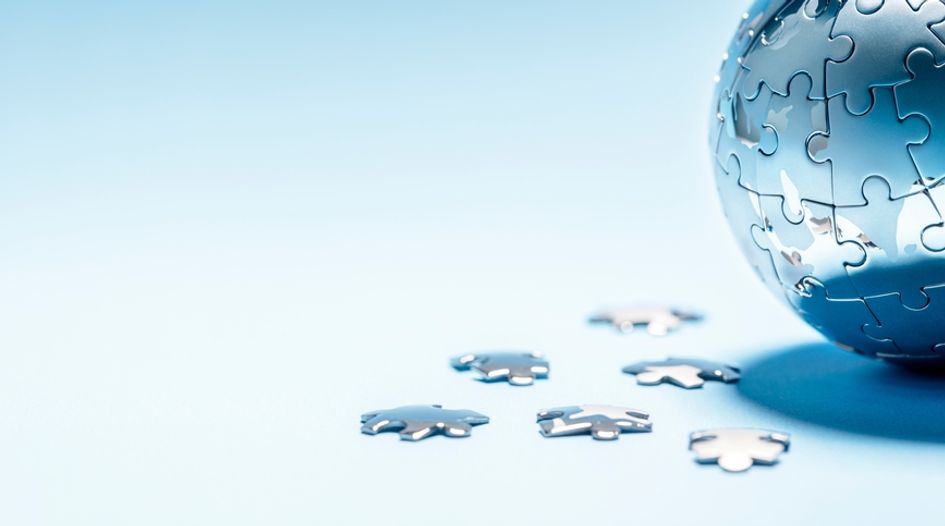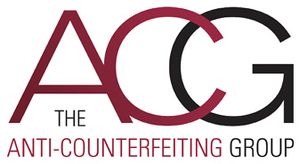Global collaboration vital in the fight against counterfeiting

This is an Insight article, written by a selected partner as part of WTR's co-published content. Read more on Insight
The past 10 years have seen many expert reports and studies about counterfeiting, its causes and its global impact. The most widely accepted studies have been produced by the Organisation for Economic Cooperation and Development (OECD), in conjunction with the European Intellectual Property Office’s (EUIPO) Observatory on Infringements of Intellectual Property Rights.[1] The US Patent and Trade Mark Office (USPTO) has also been responsible for producing groundbreaking data.
In Europe, the OECD and EUIPO have published studies that have not only given us a better understanding of the global counterfeiting phenomenon[2] but have also provided sectoral work to identify intricacies and issues in specific business subdivisions,[3] as well as key indicators from EU-wide surveys to determine consumer perceptions and behaviours regarding intellectual property (IP) and the general appetite for fake goods.[4]
The most recent joint report on the overall scope and scale of IP crime estimated that the volume of international trade in counterfeit and pirated products amounted to a staggering $464 billion, or 2.5% of world trade. Globally, the OECD places counterfeiting as being as large as the GDPs of countries such as Austria and Belgium.
Clearly, counterfeiting has a huge effect on the public purse and our prized job-providing companies in terms of sales and losses of jobs. A pre-COVID OECD-UK Intellectual Property Office study[5] (currently being updated) emphasised that over 86,000 jobs may be lost because of the trade in fakes.
The consequences of Counterfeiting
Counterfeiting has major consequences for the stability of our economies and public services, as we spend more and more effort dealing with associated crimes and increasing dangers to consumers and their families from unsafe fake products. A simple view of the latest EU Customs report on seizures of counterfeit goods reveals that 30% have the potential to endanger consumers.
Further research by the OECD and EUIPO titled ‘Dangerous Fakes: The Trade in Counterfeit Goods that Pose Health, Safety and Environmental Risks’[6] quantitatively assessed the scope and trends of threats generated by counterfeit goods, to health, safety and the environment.
The report categorised the most frequent risks posed by counterfeit products as follows:
| Product (HS) Code | Most Frequent Risk |
| Foodstuffs (02-21) | Microbiological chemical |
| Pharmaceutical products (30) | Microbiological chemical |
| Perfumery and cosmetics (33) | Chemical microbiological |
| Soap (34) | Microbiological chemical |
| Clothing, knitted or crotched (61) | Injuries, Strangulation, Chemical, Choking |
| Other made-up articles (63) | Injuries, Strangulation, Chemical, Choking |
| Jewellery (71) | Chemical |
| Electrical machinery and electronics (85) | Electric shock, Fire, Environment, Burns |
| Watches 91 | Chemical |
| Toys and games (95|) | Chemical, Choking, Injuries, Environment, damage to hearing, burns, strangulation |
| Vehicle parts (87) | Injuries, Fire |
The report details specific health and safety threats posed by certain counterfeit products. These include:
- Jewellery and watches, which contain toxic substances such as lead, cadmium, PVC and other plastics.
- Clothing, including children’s clothing, which contains toxic materials and is made in a way that poses risks of choking and fire.
- Homeware, such as cushions made from extremely toxic material containing dyes which release aromatic amine benzidine, which when in direct and prolonged contact with the skin can be absorbed and cause cancer cell mutations and affect reproduction.
- Toys made with substandard products that contain phthalates, a chemical that can damage the liver, kidneys, lungs and reproductive system. Additionally, counterfeit toys can pose choking hazards, from parts not securely attached, including magnetic components, which once ingested can cause significant intestinal damage.
- Alcohol, found to contain illegally high levels of ingredients and toxic chemicals such as methanol, formic acid, isopropanol, acetone, fusel alcohols, bio-solvents, aflatoxins, hydrocyanic acid (a highly poisonous product), cyanide derivatives, heavy metal contamination (with lead, arsenic or cadmium) and elevated levels of acetaldehyde.
- Cosmetics and personal care products: further reports found Diethylene Glycol in toothpaste, which is particularly toxic to young children, and copper, mercury, arsenic and carcinogenic FAL-LATE chemicals in cosmetics, which can cause skin reactions and poisoning, and have been linked to hormonal disruption.
The counterfeiting link to organised crime
From a panoptic crime view, broad expert analyses and commentaries signpost what is driving this worldwide crime wave. Almost all provide increasing and growing evidence that product counterfeiting supports wide-ranging and expansive illicit trade activities that are continually attacking society and security across the world.
There is little doubt nowadays that the intercontinental trade in counterfeit goods acts as a ‘seed funding’ venture for organised crime networks that are often involved in some or all forms of illicit trade, including people trafficking, drugs, weapons, forced labour, money laundering, environmental crimes, personal fraud, identity theft and money laundering.
The importance of Operation Vulcan
Operation Vulcan, led by Greater Manchester Police (GMP) in the UK over the past year, involved an operation that brought together a range of other enforcement authorities, the Anti-Counterfeiting Group and international businesses. Operation Vulcan revealed many of the ‘poly-criminal’ threats mentioned above[7], as well as prostitution, violent crime and vehicle theft.
Whilst tackling the counterfeit trade in the Greater Manchester area had been a large part of the planned work, GMP was also fully aware of the even greater need to fight the serious organised criminality embedded in the area. The results of Vulcan and other major UK operations have thrown a different light on IP crime and offered a contrary view to long-accepted perceptions that organised crime and illicit trade only operate in silos. It is now clear that previous misconceptions had, in many ways, prompted a siloed approach to combating these crimes. This approach suited the way we had set ourselves up, in international enforcement, to combat these forms of transnational criminalities.
However, recent evidence has shown that this is not the way our enemies think. Their main preoccupation is simply profit and wealth. There is no deeper aim other than to use as many forms of illicit trade as possible, often in cross-combinations, to fund and serve their repugnant ends. Simply put, cross-border channels, expertise and money used and derived from one facet of crime simply fund lifestyles and other criminal opportunities.
Counterfeiting: The silent banker to illicit trade
We have now developed and built our understanding that transnational crimes have many originators, and it is not always helpful to think of them as being singularly nationalistic. Whilst numerous forms of illicit trade have indeed been found to be driven by Chinese cartels, they have clearly and undoubtedly favoured IP theft and counterfeiting – as shown by international enforcement agencies such as Interpol Europol and the United Nations Institute on Interregional Crime.
The most recent OECD-EUIPO joint study signalled the fact that China and Hong Kong are the top provenance economies for counterfeit goods, with over 80% of goods seized at Europe’s borders originating from those markets. By anyone’s calculations, this is an oversized role.
However, there is a grave danger in focusing on who is to blame rather than solving the problem. Counterfeiting – the ‘silent crime’ – has grown to the levels it is at today for numerous reasons. We would all recognise these: globalisation, the Internet, innovative manufacturing technologies, blockchain and crypto, the unprecedented growth in black markets, and of course transnational organised crime. But it is the desire and capacity to penetrate and use legal structures to enable the reinvestment of money that gives real concern. Cash remains a vital enabler in the ‘reinvestment breach’ to make more money from illicit trade. What is the result?
The Brandenburg Institute for Society and Security reports that illicit trade from official economic statistics and national accounting approaches is estimated to deprive the global economy of €1.96tn each year – accounting for almost 3% of global GDP.[8] Beneath this, global counterfeiting provides a critical ‘foundation slab’ of money.
In the fight back, some expert views are that we probably lack a global set of modern enforcement models and regulations to fight this challenge. This is probably true, but the sad fact is that some forms of illicit trade, such as counterfeiting, are simply tolerated in many countries. Furthermore, it is probably true that too many governments across the world see counterfeiting as a lesser evil. As a result, it has become the perfect shelter from which to provide seed funding for wider illicit trade and fraud. In fact, counterfeiting is an indispensable enabler, providing vast amounts of unaccountable cash.
In simple terms, counterfeiters drive the growth in international illicit trade by propelling massive wealth towards transcontinental crime networks that threaten development, security and global financial stability, in a world where the UN Trade and Development organisation (UNCTAD) has described a rapid growth in illicit trade. Trade councils, business associations and think tanks quantify its annual size as between $650 billion and nearly $3 trillion.
The bad news is that this is likely to continue unless there is a multilateral and multidimensional fight back. We are already witnessing the relocation of manufacturing and transhipment in the counterfeiting arena. If nothing else, counterfeiters are enterprising, innovative, nimble, relentless and analytic. If a country is considered to be less condemning of counterfeiting, with less developed protection and enforcement structures, the counterfeiters will move in and in some cases become a major employer. This gives them influence and the power to make use of legal systems and structures to further their aims and capabilities.
Collaboration is key
What is clear is that we need to be equally innovative, analytical and persistent. However, we cannot achieve successful results by simply closing the door on international crime and hoping it will go away. No single authority or agency is going to crack this on its own.
The good news is that we are part of a global network and we have already started to build a greater understanding of the phenomenon and problems we face through the studies of the OECD, the USPTO, UNICRI and the EUIPO. These have provided impressive foundation stones, as have the actions taken by national and international enforcement-related authorities. But all this knowledge and analysis needs to be better harnessed, integrated and brought together to provide a capability to evaluate current and future risks and threats. Then we will have the capacity to promote international cooperation and collaboration, to better prevent and nullify global criminal networks.
ACG’s role in this is to help build and maintain intelligence and information to foster international alliances and ultimately drive more effective and sustainable strategies, regulation and enforcement. We are a major contributor to the UK Intellectual Property Office’s enforcement and international trade teams, all UK enforcement authorities, the OECD, the EUIPO, the World Customs Organisation, Europol, Interpol, UNICRI and the Global Anti-Counterfeiting Network. The list goes on. But more partnerships are needed.
Our guiding aims and functions are to jointly protect businesses and consumers by:
- raising levels of awareness of the threats and unifying and supporting enforcement and policy-makers through actionable intelligence; and
- building greater expertise and compelling intelligence-based narratives to drive more understanding and more effective evidence-based policy decisions and actions.
At ACG we recognise that a structure to enable the UK to continuously share information, best practices and intelligence with international partners is more crucial than ever. This is why we place such emphasis on training, events, media outreach, international partnerships and our international conference.
We are all part of a global network, but this needs to be nurtured, fed and informed, and this has to be our international collective priority. Managing and not preventing is no longer adequate to fighting a global challenge that is destabilising international structures and norms. The call is to further develop our efforts to support the weakest links and build a pathway for real international, inter-agency collaborations based on shared public-private intelligence and expertise.
Endnotes
[2] https://www.euipo.europa.eu/en/publications/illicit-trade-global-trade-in-fakes-a-worrying-threat.
[5] https://www.oecd.org/gov/risk/trade-in-counterfeit-products-and-uk-economy-report-update-2019.pdf.


